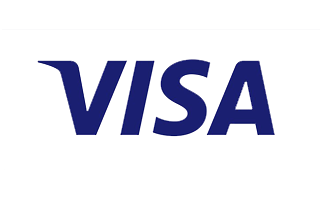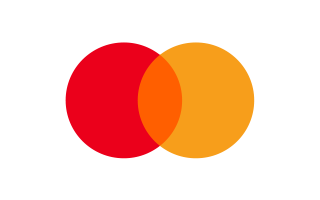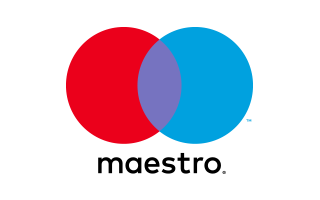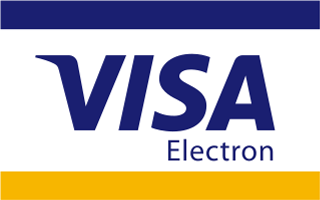Is a Quick Weave Better Than a Sew-In Weave?
When it comes to achieving luscious, voluminous hair, weaves are a popular option for many. Among the most debated choices are Quick Weaves and Sew-In Weaves. Each method has its unique benefits and drawbacks, and choosing the right one depends on various factors, including your lifestyle, budget, and hair type. In this article, we will delve into the details of both Quick Weave and Sew-In Weave, compare their features, and help you decide which method might be the best fit for you.
What is a Quick Weave?
A Quick Weave is a method where hair extensions are glued onto a protective cap that is placed over your natural hair. This cap acts as a barrier to safeguard your natural hair from the adhesive used to attach the extensions.
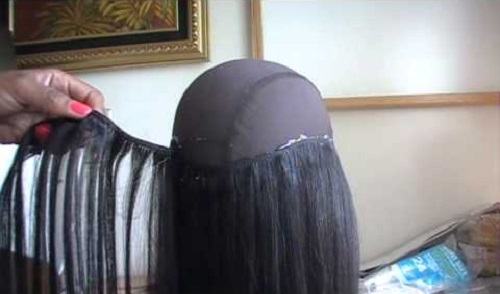
Materials and Tools Used
- Protective cap
- Weave glue
- Human hair extensions
- Scissors
- Blow dryer
Quick Weave Application
Step 1: Prepare Your Natural Hair: Wash and condition your natural hair, and then blow it dry at the lowest heat setting. Cornrow your natural hair or slick it back using gel. Ensure the base is clean and flat.
Step 2: Apply the Protective Cap: Place the cap over your head. You can place two caps on to add an extra barrier to protect your natural hair. you can leave a small section of your natural hair out to cover the wefts. You can use thread and needle to sew the edge of the cap to your braided natural hair. Cut the extra edge of the caps to expose the natural hair around the edge.
Step 3: Attach the Wefts: Cut the hair weaves into appropriate lengths against your head and apply glue to the wefts. Attach them to the cap horizontally, starting from the back and working your way up.
Step 4: Style the Extensions: Once all wefts are attached, cut and style the extensions to achieve your desired look. Apply a small amount of light oil or edge control to the edge hair for a sleek and polished if you pull all your hair into a high ponytail.
Tips and Tricks for a Seamless Look
- Put on two caps to add extra protection to the natural hair underneath.
- Ensure your natural hair is completely dry before starting.
- Use a blow dryer to set the glue quickly and firmly.
- For a natural blend, leave a small section of your natural hair out to cover the wefts.
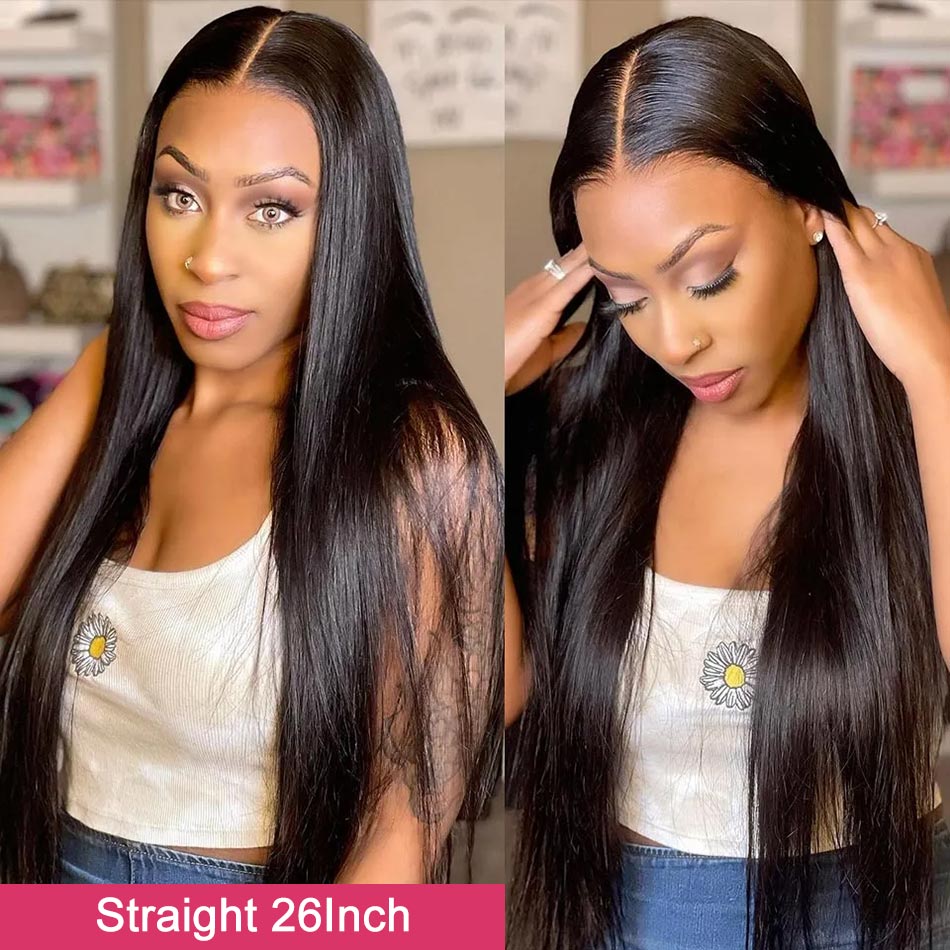
Pros and Cons of Quick Weave
- Pros:
- Less tension on natural hair
- Quick and easy to install
- Affordable
- Cons:
- Shorter lifespan
- Glue can cause damage if not applied or removed correctly
- Less secure compared to sew-in weaves
- Hair weaves may slide off if the glue is of poor quality.
What is a Sew-In Weave?
A Sew-In Weave involves braiding your natural hair into cornrows and then sewing the hair extensions onto these braids using a needle and thread. This method is known for its durability and natural appearance.
Materials and Tools Used
- Needle and thread
- Human hair bundles
- Scissors
- Comb
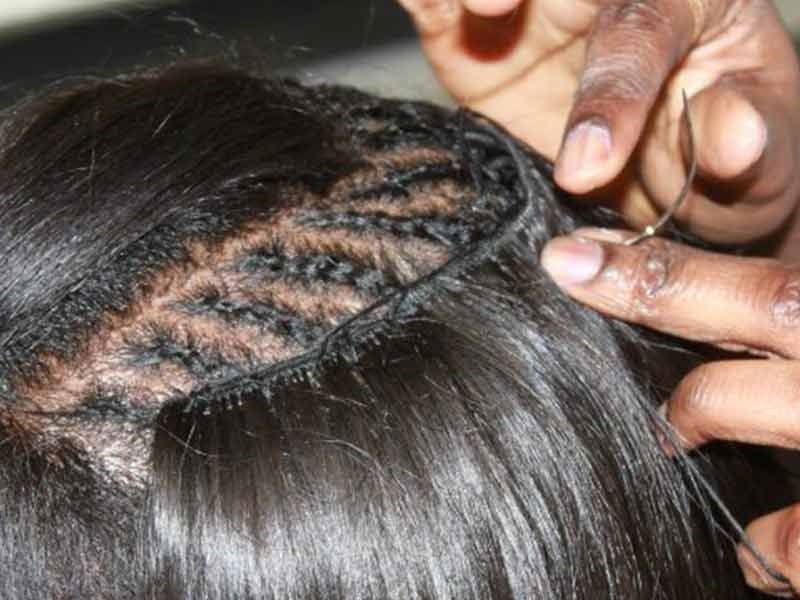
Sew-in Weave Application
Step 1: Prepare Your Natural Hair: Wash and condition your natural hair for a clean and moisturized base.
Step 2: Braid Your Hair: Braid your hair into cornrows. Ensure the braids are tight and flat.
Step 3: Sew the Wefts: Use a curved needle and thread specifically designed for hair weaving. Starting from the back, sew the wefts onto the braids. Continue until all wefts are securely attached.
Step 4: Style the Extensions: Cut and style the extensions as desired.
Tips and Tricks for a Seamless Look
- Ensure the braids are tight and secure.
- Double knot the thread for extra security.
- Leave some natural hair out for blending.
Pros and Cons of Sew-In Weave
- Pros:
- Long-lasting (up to 8 weeks)
- Less frequent maintenance required
- Secure and natural-looking
- Cons:
- Time-consuming to install
- Can cause tension and breakage if not done correctly
- More expensive than Quick Weave
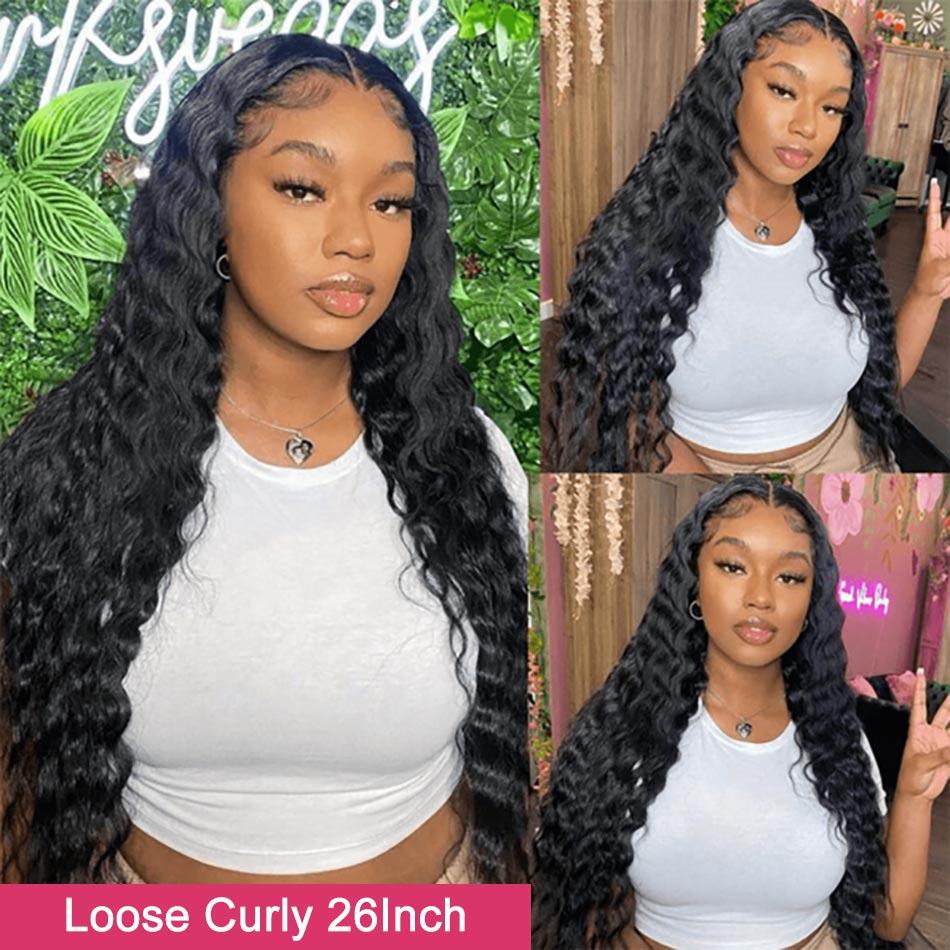
Quick Weave vs. Sew-In Weave
Durability and Longevity
- Quick Weave: Typically lasts between 2 to 4 weeks, making it a short-term solution. It's ideal for those who like to change their hairstyles frequently. Here are some factors that may affect the durability:
- Quality of the glue and hair extensions used.
- Proper installation technique.
- Adherence to maintenance routines to prevent the cap from shifting or loosening.
- Sew-In Weave: This can last up to 8 weeks or longer with proper care, offering a more long-term solution. Here are some factors that may affect the durability of sew-in weave:
- Quality human hair bundles used.
- Tightness and neatness of the braids.
- Regular maintenance to keep the wefts secure and prevent matting.

Cost and Affordability
- Quick Weave: The cost of a quick weave typically ranges from $50 to $150 depending on the quality of human hair extensions used. Generally more affordable upfront due to lower installation costs. Suitable for budget-conscious women.
- Sew-In Weave: A professional installation of sew-in weave typically ranges from $100 to $300, excluding the cost of human hair bundles. Higher initial cost but can be more cost-effective in the long run due to its longevity.
By the way, no matter what method you go for, keep in mind that choose high-quality human hair bundles, which can be reused for multiple installations, saving money in long-term use.

Installation Time
- Quick Weave: Takes approximately 1 to 2 hours to install, making it a faster option. Ideal for those seeking a quick transformation. And, quick weave can be done at home with the right tools and some practice, making a quick and easy solution ideal for beginners and busy women.
- Sew-In Weave: The installation process takes about 2-4 hours depending on the complexity of the braiding pattern and the number of bundles used.
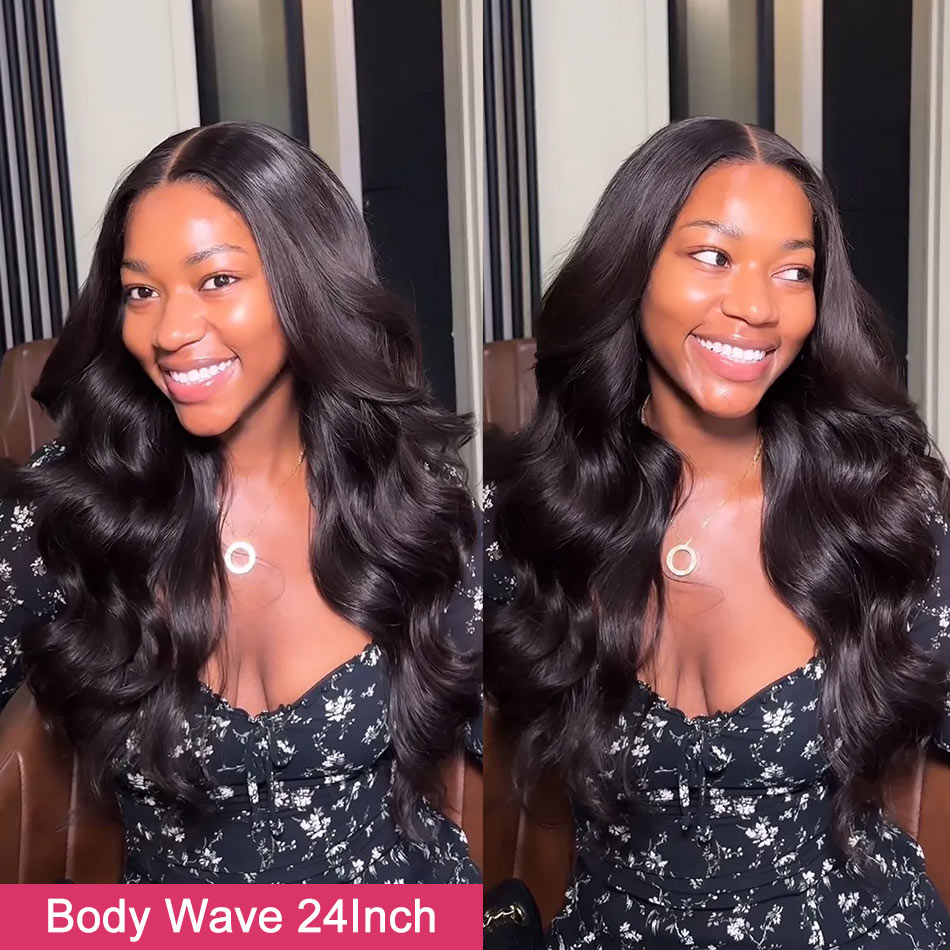
Removal Time
- Quick Weave: Removal can be done quickly but requires careful handling to avoid damaging natural hair.
- Steps to Remove a Quick Weave:
- Lift the bottom layer of hair extension to expose the track, from the back and work your way up, apply glue remover, oil, deep conditioner, or something else that can loosen the glue to the track, and allow it to sit for a while. Repeat the process to apply remover, start at the back, and work your way up.
- Slightly rub the area around the track of the weaves to check if the weave starts to get loose or slide off. If it is still secure, apply more remover and allow it to sit for a while.
- When the tracks of the weaves get loose and can easily be peeled off, gently remove the extensions.
- Rub plenty of hair conditioner on the cap so that you can smoothly take off the cap.
- Unravel your natural hair, washing and conditioning it with a mild shampoo and hair conditioner. Blow it dry with the lowest heat setting.
- Wash your hair weaves with a deep conditioner to remove any residue. Allow your hair extensions to air dry after the washing process.
- Steps to Remove a Quick Weave:
- Sew-In Weave: Takes longer to remove due to the need to cut the threads and undo the braids. Need help from another pair of hands. But much safer than removing a quick weave.
- Steps to Remove:
- Carefully cut the threads securing the wefts.
- Unravel the cornrows and gently detangle the natural hair.
- Steps to Remove:

Hair Health and Maintenance
- Quick Weave: Less tension on natural hair compared with sew-in weave. Although the protective cap helps to minimize direct contact with glue, the adhesive can permeate through the cap and cause damage if not applied or removed properly.
- Maintenance Requirements:
- Use a sulfate-free shampoo and conditioner to clean your weave.
- Avoid excessive heat styling to prevent damage.
- Wrapping hair at night to prevent tangling.
- Avoid applying oil, conditioner, or excessive moisture around the tracks of hair weaves to prevent the weaves and cap from loosening.
- Maintenance Requirements:
- Sew-In Weave: More secure than a quick weave. However tight braids can cause tension and potential breakage if not installed correctly. Don't braid your natural hair or sew the extensions too tightly to reduce discomfort, pain, and risk of hair damage. This method requires proper braiding technique to minimize hair damage.
-
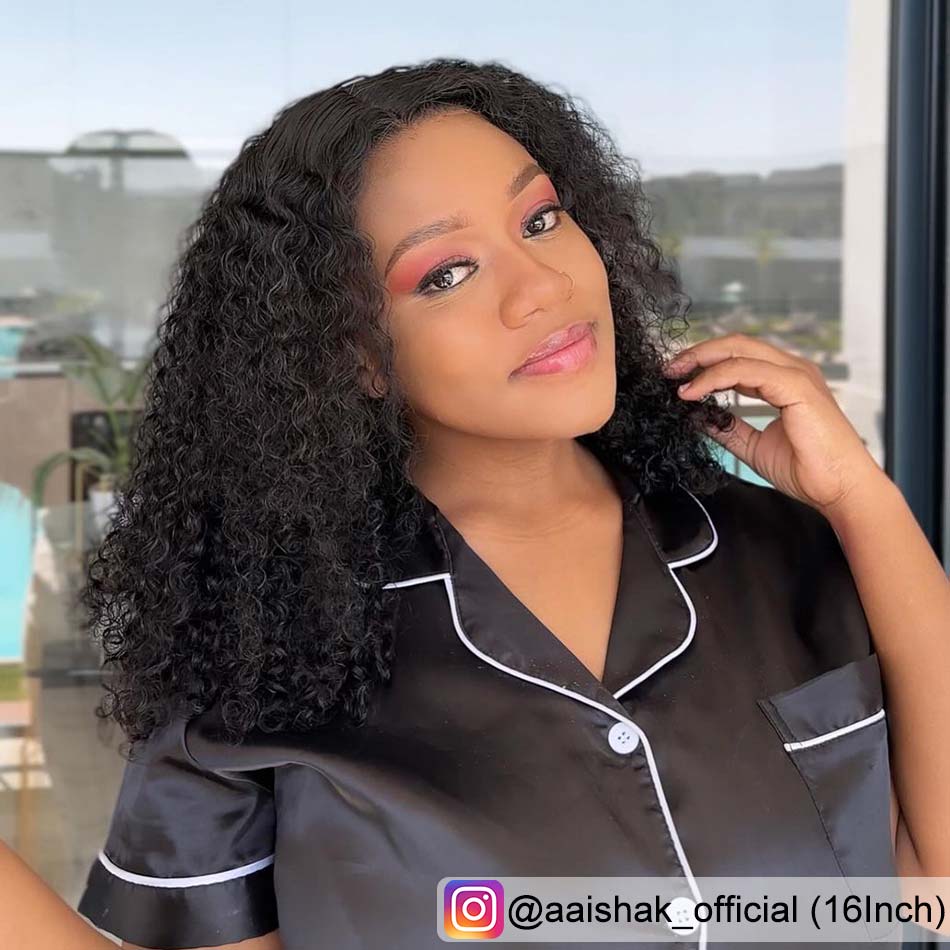 :
:Maintenance Requirements
- Regular moisturizing of the scalp and natural hair.
- Wrapping hair at night to prevent tangling.
-
Versatility and Styling Options
Both quick weave and sew-in weave can be customized with various colors and textures. However, sew-in weave should be more versatile in style cause it's more secure. Sew-in weave offers more versatility in those intricate hairstyles that require volume and length.
Quick Weave offers a quicker and easier solution for you to switch between different hairstyles, ideal for those who desire temporary changes.

Choosing the Right Weave Method for You
Quick weave and sew-in weave do have some differences in installation and removal steps, effects on natural hair, etc. So how to know which is better for you, here are some factors to consider when choosing between quick weave and sew-in weave:
- Personal Lifestyle: Consider your daily routine and how much time you can dedicate to hair maintenance.
- Preferences: Think about your desired look and how long you want the style to last.
- Budget: Sew-in weave is typically more expensive than quick weave, due to its need for professional installation. Consider your budget when choosing from these two weaving methods.
You can consult with your hairstylist to get personalized recommendations. Or you can leave any concerns you may have below, we're pleased to help you.

Conclusion
Both Quick Weave and Sew-In Weave offer unique benefits and can enhance your look in different ways. Ultimately, the best choice depends on your personal needs, preferences, and budgets.
A quick weave is more suitable for those who want a budget-friendly, DIY-available, quick swift, and temporary choice. A sew-in weave is better for those who desire a more secure and long-lasting option, those who have a large budget or desire intricate hairstyle.
We here encourage you to experiment with different weaving methods to see which one suits you best. And always keep in mind that no matter which way you go, using high-quality human hair weaves for a more long-lasting result and saves more money in long-term use. As for where to buy high-quality human hair, look no further than elfinhair.com, which offers affordable quality human hair and wigs. Click and explore various colors, textures, and lengths that are available at Elfin Hair to achieve the perfect look now!
Related Articles:
20 Chicest Sew-In Hairstyles to Protect Your Natural Hair
How to Revive Your Hair Extensions?
Brighten Up Your Summer: The Hottest Color Wigs
The Ultimate Guide to Washing Human Hair Wigs

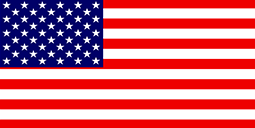 USD
USD EUR
EUR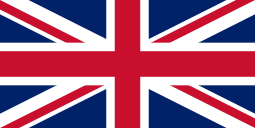 GBP
GBP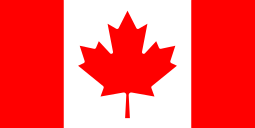 CAD
CAD AUD
AUD
 :
:


